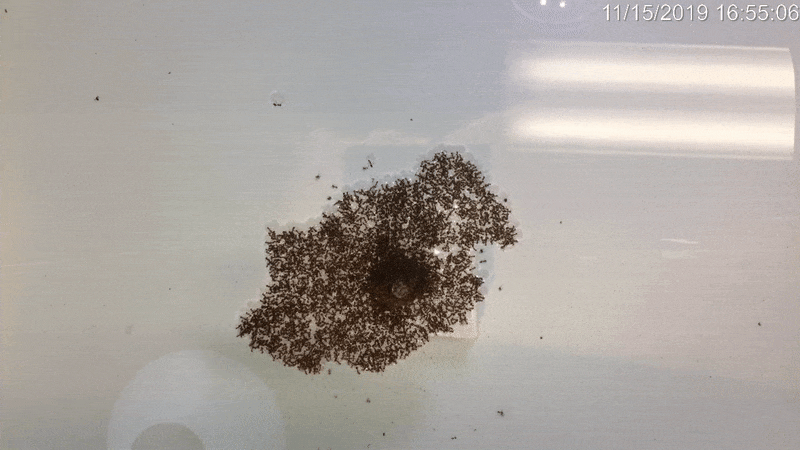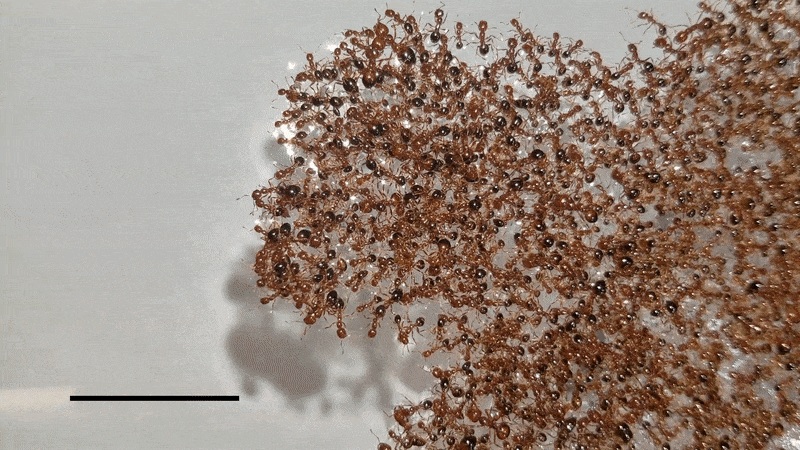
Watch packed fire ants numbering in the tens of thousands form living ‘conveyor belts’ to escape floods (Video).
The following written content by Mindy Weisberger
These buoyant rafts are made of tightly packed ants numbering in the tens of thousands.

It takes a lot of teamwork to survive floods, and fire ants cooperate in the tens of thousands to build rafts of their bodies to float until the water subsides. Now, a time-lapse video shows how these crafty insects also create living conveyor belts on these rafts to help the riders reach dry land.
The footage revealed how ant rafts changed their shape, with slender extensions of ants growing from the main sections of ant rafts like tentacles, over just a few hours. These bridges grew from the combined activity of two ant groups: so-called structural ants — insects that pack closely together to keep the colony afloat — that circulated to the top of the pile from the bottom, and surface ants that marched freely about on top of the rafts, which then moved into supporting positions underneath their friends and relatives.
There are more than 20 species of fire ants worldwide, but one species in particular, the red imported fire ant (Solenopsis invicta), is known for its massive colonies of as many as 300,000 workers, according to North Carolina State University.
If their underground tunnels flood, fire ants link together to create floating rafts that can hold together for weeks, if necessary, carrying the colony until waters recede. A fire ant’s exoskeleton naturally repels water, and its rough texture traps air bubbles. Tightly knit ant bodies can, therefore, create a buoyant, water-resistant foundation for a floating raft, Live Science previously reported.
Prior research found that even after an ant raft’s structure stabilized, its shape continued to change, with questing tentacles extending in multiple directions — but scientists didn’t know how, exactly, that was happening. Read more from Live Science.




